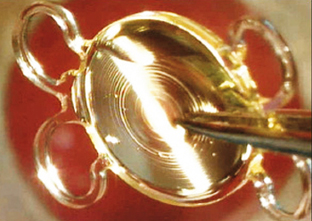Health: focus on intraocular lens implants

What role have plastics played in cataract surgery ?
Intraocular lens implantation was a milestone development in cataract surgery, because it allowed the crystalline lens that lies behind the iris - to be replaced with an artificial lens.
Through the combined efforts of industry and practitioners, this medical device was then constantly refined to make the surgical technique increasingly safe and effective...to the point where it is now a common procedure.

Where have the main innovations been ?
 Implants have diversified widely to address ophthalmologists’ demands for their patients’ specific needs.
Implants have diversified widely to address ophthalmologists’ demands for their patients’ specific needs.
The models currently on the market differ as to the kind of polymers used, their mechanical properties – soft or hard, their ability to function normally in aqueous media and their design.
There are pros and cons to each of these solutions. Trade-offs often have to be made in terms of ease-of-implantation, desired optical performance or potential post-operative complications.
What are the key improvements, for patients especially ?
 One big step forward is the smaller-sized incision needed to remove the lens nucleus after ultrasound fragmentation or phacoemulsification.
One big step forward is the smaller-sized incision needed to remove the lens nucleus after ultrasound fragmentation or phacoemulsification.
This advance in, what is called, minimally invasive surgery was made possible by the development of soft, foldable implants in the 1990s. The kind we make, for example, can be introduced through an incision of less than 1.8 mm. The advantage of these small stitchless incisions is not to cause corneal deformation. This reduces postoperative effects and speeds the recovery of sight.
What role does polymer research play in these developments ?
Quite a big one, because although the group of materials usable is limited, there is wide scope for improvement.
Three types of polymers have become standard for making soft intraocular lenses: hydrophilic acrylics or hydrogels, hydrophobic acrylics and silicones.
We personally focus on the two families of acrylic-type polymers which are, by far, most widely used.

Any properties in particular ?
 Our know-how extends to all stages of intraocular implant production: polymer chemistry, near-micrometre-scale modelling, control of the risks inherent in implantable materials, sterilization and packaging of the medical device.
Our know-how extends to all stages of intraocular implant production: polymer chemistry, near-micrometre-scale modelling, control of the risks inherent in implantable materials, sterilization and packaging of the medical device.
The polymers used to manufacture our soft intraocular lenses typically involve, at least, two acrylate components with a semi-soft backbone, or harder methacrylate. The point is to tailor the properties of the end material, especially its water content, refractive index and mechanical properties, according to precise specifications.
This allows us to supply practitioners with pre-loaded – i.e., ready-to-inject, soft implants that are easily positioned into the eye using a dedicated insertion injection cartridge.
Is it just about simpler operating procedures ?

Not entirely.
We are currently developing a new generation of what are known as multifocal diffractive trifocal lenses giving good vision at all distances. Patients no longer need to use glasses in over 90% of situations.
At the same time, we are trying to factory-produce lenses that are as personalized as possible by adapting the thickness, curvature or optical properties (power, cylinder, aberrations, etc.) to the patient’s requirements.
In the medium term, we are looking at pushing customization even further by developing "smart" polymers that can be adjusted by the surgeon during surgery, or even spontaneously, according to the patient’s in vivo environment.
MORE INFORMATION





